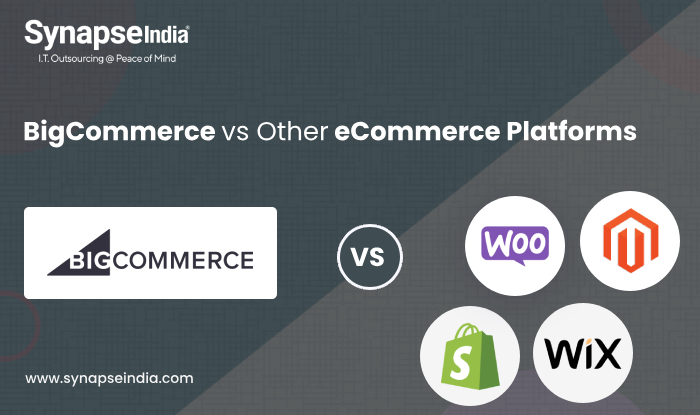 02 Dec 2021
02 Dec 2021“An AIO guide on a product development strategy that discusses its types, benefits of product development strategy, its life cycle, examples, and more in detail.”
Do you know how vital a good product development strategy is to successfully develop and market a product or product line? Without a properly designed product development strategy, any new or existing product runs a considerable risk of failure to market, leading to loss of energy and resources.
The product development strategy includes the forms and actions used to market a new product or modify existing ones to enter new markets. Product development consists of several steps, from producing an idea to distributing products to customers.
Every stage requires the strategy to be successful and generate income for a company. We will discuss all aspects of product development strategy through this blog.
Product development strategy enables organizations to create a stream of innovative offerings that attract customers and competition. Product development strategy is a subgroup of corporate strategy. Sets the direction for new products by setting goals and funding decisions.
The primary reason for the product development strategy is to gain competitive benefit by placing the product supply in the best possible position to drive business objectives such as profit, revenue, and sales growth..png)
Product development strategy is important because it uses market research to develop a plan for product sales success. Your overall strategy should consist of the methods that you will use during each stage of product development.
This can assist you to overcome obstacles and focus on the most fortunate strategies. Creating plans on how to develop various products can also allow you to adjust existing products and grow your business.
Here, in this segment, we will list down the benefits of the product development strategy. Get a quick look:.png)
Offering a free or less expensive sample version of your product can convince customers to give your product a try that they otherwise would not have bought the full version. This strategy is based on the quality of the product assuming that several customers who experience the trial will purchase the full version. However, providing a free trial can show customers how they can get an advantage over the rest of your products.
Value can be increased by having products in bulk, including premium features, or by adding customer support programs. Existing customers can buy your products to get a better deal, while new customers will come because of the added benefits.
You can encourage customers to buy more of your product by creating deal packages. This strategy exposes customers to multiple types of your products via assortments or sample packs that could solve various issues for the customer. Also, an array of deals can introduce customers to a product that they might not have bought and encourage them to buy it in the future.
Products can also be personalized or specialized for a specific group of customers to create a unique and personal gift. Customizing the product based on the lifestyle and needs of customers can help them choose your product over a competitor's product that only offers a general version.
The product management team plays a crucial role in product development, acting as strategic directors of the process. But while we often use the two terms interchangeably, product development is not synonymous with product management. Product development is a much broader process that involves the coordinated effort of many teams in a company, including:
● Product management
● Design (UX / UI)
● Development (or manufacturing)
● Marketing
● Testing and quality control
● Sales
● Maintenance and support
Creating new products and services can be a process full of uncertainty. However, following the systematic product development procedure helps companies gain confidence and clarity in what they are developing.
The goal should be to generate many valuable ideas that can form the basis of your new product development strategy. The main focus at this stage is to organize brainstorming sessions where solving customer problems is prioritized..png)
Moreover, this phase is not about creating foolproof ideas that are ready for execution. Instead, you should discuss raw and untested ideas that can be shortlisted later.
The ideas generated must go through a selection process to filter the viable ones. The company seeks opinions from clients, workers, and other companies to avoid the search for unfeasible and costly ideas.
However, external industry factors that affect startups and businesses, such as legislation, competition, and changes in technology, influence the company's decision criteria. At the end of the selection process, the company is left with only a few workable ideas from the large group generated.
Before starting the new product development process, priority should be given to building a detailed version of the idea and user stories. This value proposal evaluation is the primary step toward concept testing and development. At the very least, it ensures that focus problems are discovered earlier and that the team can correct courses sooner. That helps ensure that technical debts don't pile up.
.png)
Product developments imply the actual design and manufacture of the product. Development starts with the manufacture of a prototype that offers market testing. As per the test results, the business owner decides whether he/she will undertake large-scale production or not.
This step in new product development is intended to reduce the uncertainty surrounding the success of the software product. In other words, this step revolves around checking the feasibility of the new product or your marketing campaign..png)
Commending results in the development stage precede large-scale commercialization and production. Here, the company launches its promotional campaign for the new product. Moreover, market research conducted during the conception stage influences the location and timing, and location of the product launch.
Following are the product development strategies. Get a look:
Companies participating in this strategy are continually researching to identify customer needs and developing beneficial products to meet those needs. This requires the investment of resources to understand those needs. Hiring experienced UX and market researchers and vendors, promoting research across the organization, and creating a customer-centric culture are the cornerstones of this strategy.

Companies can form alliances and pool skills in technology, production, or geography to be more competitive without taking the total risk of product development. Building alliances is often a good strategy for small organizations if they can find partners to complement them. Partnerships that share the cost of market research and UX research can accelerate your new product development efforts.
Many product-focused companies use research and development to gain benefits with technically superior products. However, the functions of the product are nothing if they do not benefit the users. The new product development process has undergone a major change in many companies, especially in the digital world, trying to make it faster and in tune with user expectations.
These are formal alliances that legally unite multiple organizations. These can be the total acquisition of a company or the creation of joint ventures to gain access to the resources of the organizations involved..jpg)
The problem with this strategy often arises if the cultures of the merging companies are too different. Companies that lose their customer focus in the merger tend to do poorly with this strategy.
Companies that adopt a defensive strategy try to protect the profitability of existing products when competitors, cultural and economic trends change a company's product category. These may consist of increased advertising, price reductions, improved products, and new brand positioning.
However, most of the time, there is no time, budget, or willingness to participate in market research or UX, which increases the risk of failure. So, when it comes to research, proactive is better compared to reactive.
Of all the reactive strategies, this is the friendliest and closest to a customer-centric approach to new product development. Explains companies that make product improvements or develop new ones after understanding customer complaints.
While admirable when companies listen to customers, this strategy can lead to missed market opportunities by presenting solutions too late, if competitors are already on their way to developing products for unmet needs. Consequently, companies are likely to make more profit if they are proactive in using market research..jpg)
Copying competitors' products is an old strategy, one that is even rarer today both online, with eCommerce and Amazon's greater reach, and offline, with store brands. Low-quality versions of many products can often be found in many categories. The success of such a strategy depends on a deep understanding of the customers in a product category and brand positioning.
Here, in this section, we will explain some major product development strategy examples. Have a quick look:
Netflix has a profit and margin-driven strategy to maximize adoption and retention. Netflix is the largest streaming service in the world. Netflix's core offering is a subscription that includes unlimited access to content. Its product strategy emphasizes margin growth.
It has increasingly focused on providing high-quality original content to fix the eyes on the screens. Netflix is built on a solid and trustworthy brand that promises movie enjoyment made easy. Its ease of use, strong branding, and customization are hard for competitors to duplicate..png)
IKEA has a strategy to focus on low cost with a consistent level of quality. The large volume of interchangeable parts requires an extensive supply chain globally. Initially, the company rented equipment from suppliers and provided quality assurance training. After some time, it reorganized its supply chain to manage the geographic dispersion and large volume of its suppliers.
With its core competence in supply chain management, Ikea can pursue a product differentiation strategy by offering furniture for any home. Ikea is also committed to the principles of sustainable design. Its product strategy is based on intelligent design driven by its unrivaled supply chain..jpg)
In general, a winning product development strategy should define the direction of a product and what you would like to achieve. A strong vision will paint a picture of the world that your product will create as a whole, while the goals and roadmap will show a clear direction. Your metrics will keep you on track, and a strong team will execute the plan and create a successful product. If you are searching for a trusted team of dedicated professionals, you can contact us without having second thoughts in mind.
Following are the four product development strategies:
● Cost strategy
● Differentiation Strategy
● Focus Strategy
● Quality Strategy
The product development strategy flows from the corporate strategy. It is a corporate strategy applied to the product development process.
The product development strategy connects to the corporate strategy in every possible way: from the technology center of your organization, core, augmented, and transformative products, to distribution channels, geographic segmentation, etc. It allows a multidisciplinary team to see how their efforts also fit into the bigger picture.
Here are some useful product development strategies to introduce a product to your competitive market:
● Create new products
● Modify an existing product
● Offer proof
● Specialize and personalize
● Increase the value of the product
● Create offer packages
● Change your mind
● Find new markets
Some of the major examples of product development strategies are as follows:
● Nike
● Telfar
● Spotify


 29 Jan 2024
29 Jan 2024
